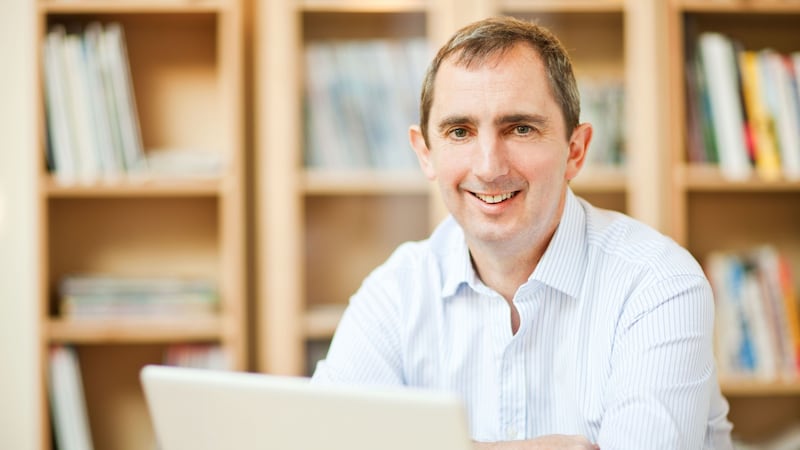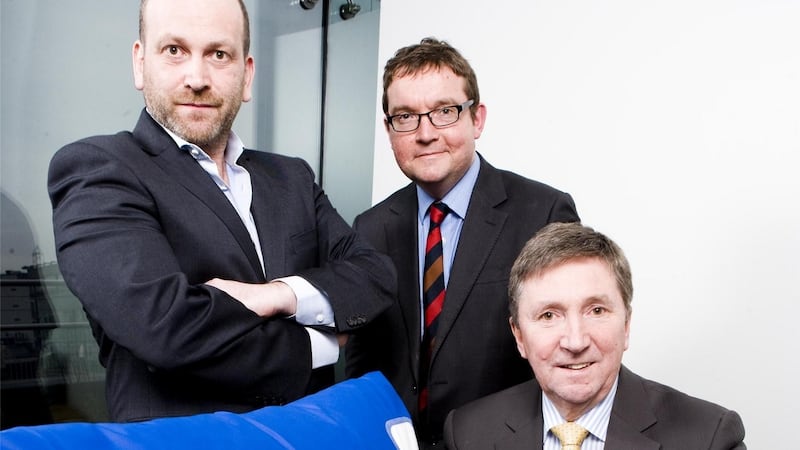Oxymem, overall winner of the 2014 Irish Times Innovation Award, has added another award to its growing list of achievements. The company has been presented with this year's NovaUCD Innovation Award which was established in 2004 to recognise excellence in innovation and success in the commercialisation of UCD research or other intellectual activity.
In Oxymem’s case the award acknowledges the success and impact that the UCD spin-out has achieved in the international, multibillion euro, wastewater treatment industry. The company’s membrane aerated biofilm reactor (MABR) technology is disrupting the global wastewater treatment sector, estimated to be worth €30 billion, by offering an energy efficient alternative to traditional wastewater treatment solutions with no increase in initial capital costs.
According to UCD president Prof Andrew J Deeks, "Oxymem is an excellent example of the quality of companies now emerging from the university. While only established in 2013, Oxymem has already grown significantly, employing over 40 people and securing international clients."


The Oxymem solution challenges the way the wastewater industry has worked for more than 100 years. At present, wastewater is treated using biological aerobic processes, primarily based on activated sludge treatment. This is the cornerstone of all municipal and the majority of industrial wastewater treatment processes worldwide.
It involves the treatment of wastewater by bacteria in the presence of oxygen. However, the process is highly wasteful of energy. It requires oxygen to be physically pumped into the sludge with typically less than 30 per cent of the oxygen supplied being transferred to the wastewater. Even with the most recent developments in fine bubble aeration technologies the maximum oxygen transfer efficiency is limited to about 35-40 per cent.
Breakthrough
The technological breakthrough made at UCD by Prof
Eoin Casey
of the school of chemical and bioprocess engineering and his colleague Dr
Eoin Syron
, which was developed and refined with funding provided by
Enterprise Ireland
and
Science Foundation Ireland
, does not rely on a bubble to transfer oxygen.
Instead, the innovative MABR technology uses gas permeable membranes, which allows oxygen to be transferred directly to the bacteria that treat the wastewater. This technology dramatically reduces the operating costs for wastewater aeration and results in a fourfold saving on energy costs when compared to forced aeration.
The technology also delivers superior nitrogen removal, reduced chemical usage, reduced sludge production, on a significantly smaller plant footprint, and can be fully automated. This results in substantially lower energy, chemical and staffing costs for wastewater operators.
Oxymem operates a 25,000sq ft facility and offices in Athlone, Co Westmeath, to manufacture treatment systems. The company has already raised €2.5 million from investors and Enterprise Ireland and secured clients in Ireland, the UK, Spain, Sweden and in North America, the Middle East and the Far East.
"Since we established Oxymem it has continued to grow from strength to strength and we continue to look towards enhanced co-operation with UCD for 2016 and beyond," says managing director Wayne Byrne. "We recently opened an office in Milwaukee to service growing demand in the North American market and we are planning to increase manufacturing fourfold and to create at least 15 new jobs during 2016."
He believes this will be an exciting year in the company’s development. “We doubled turnover to €650,000 in the past year but this is just the beginning,” he says. “We are in the final stages of our B-round of fundraising and we hope to be able to make an announcement on this in January. This will support further growth and the deployment of our new “drop-in” solution. Up until now our systems came in self-contained units and were really only suitable for new installations or significant expansions. The new drop-in solution can be retrofitted to existing plants bringing all of the benefits of our system at a much reduced cost.”
Templates
Oxymem is by no means the only success story among past winners and finalists with the great majority of them going on to make a very significant impact in their field.
The 2012 service category winner, Tweak. com, is a web-based service that puts professional quality design and graphics capability in the hands of business owners and individuals with no design or technical skills required. The service offers a range of tens of thousands of templates covering just about every piece of corporate material imaginable, from letterheads through business cards, to brochures, websites, newsletters and advertising flyers. Once a design has been completed it can be sent through to a commercial printer for printing.
Businesses around the world are already using the Tweak service without knowing it. The Tweak platform is integrated into the systems of leading online printing services in Europe, North and South America, and Australia, and their customers use it to design and print advertising, marketing and other materials all in one process.
"It's a bit like offering high-end fashion at off-the-peg prices," says founder Jerry Kennelly. "We are empowering business owners throughout the world to take control of the image of their business and produce professional quality design and print at prices they can afford."
Gabriel Scientific took the 2012 overall Innovation Award for its Sleep Angel pillow that significantly reduces exposure to allergens as well as lowering the risk of patients contracting hospital-acquired infections (HAI) such as MRSA from lying on contaminated bedding. The pillow uses a membrane that is normally used as a filter in heart stents to keep out bacteria, and is sealed by melting the edges together rather than sewing them.
The company has recently established a new joint venture, Sleep Code, with a Chinese partner that is developing innovative bedding products. "We are very excited about this," says managing director David Woolfson. "Our first project has just come to fruition. This is a hardware and software product for use in mattress design. The other thing we are doing with them is developing a range of mattresses and pillows for the Chinese market using the Sleep Angel technology. The great thing is that all the R&D work is being done here in Ireland and we now have a readymade customer with retail outlets throughout China. "
Applications will open for this year's awards on January 25th. See irishtimes.com/innovationawards












